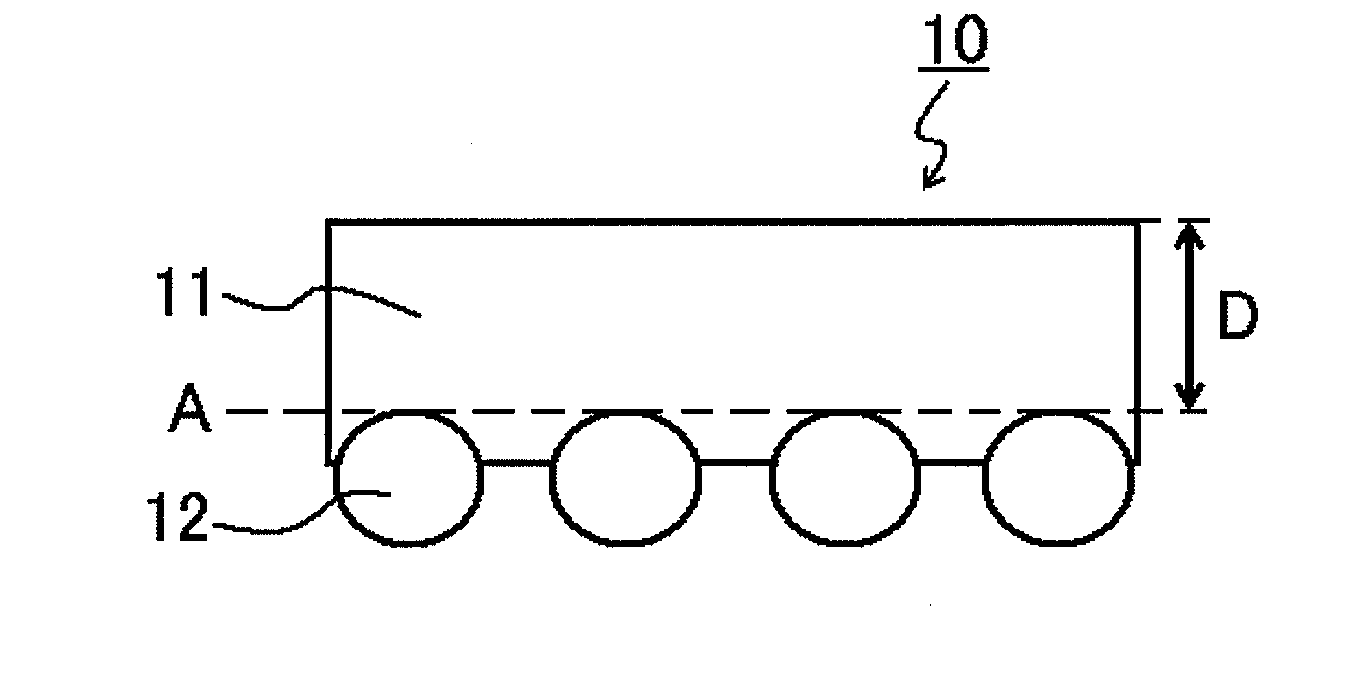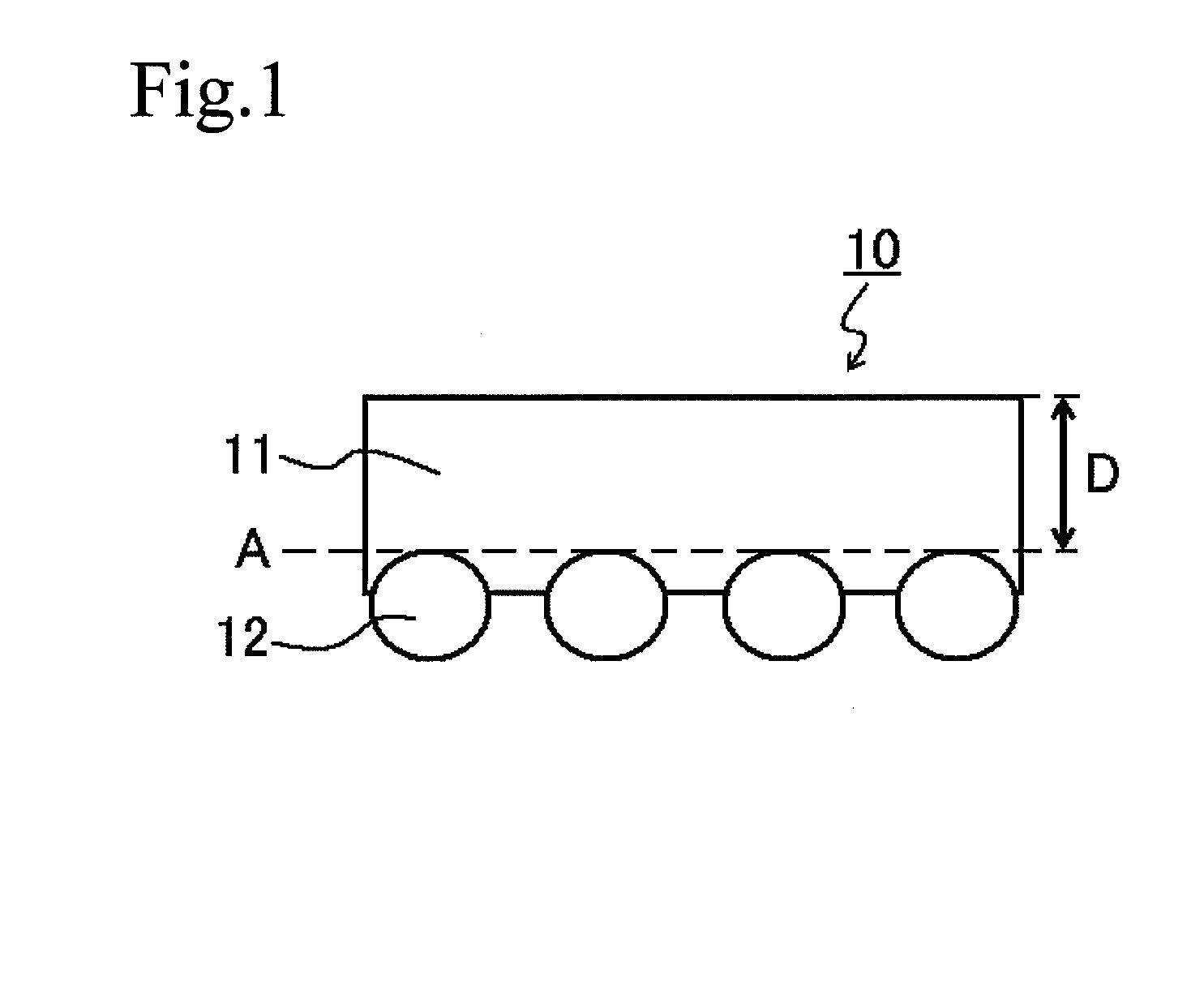Adhesive sheet for water jet laser dicing
a technology of adhesive sheets and laser dicing, which is applied in the direction of adhesives, thin material processing, electrical equipment, etc., can solve the problems of reducing the productivity of this cutting method, reducing the quality of chips and the like, and affecting the quality of the machining. the effect of precision, preventing the compromise of machining precision, and smooth penetration through the perforation
- Summary
- Abstract
- Description
- Claims
- Application Information
AI Technical Summary
Benefits of technology
Problems solved by technology
Method used
Image
Examples
example 1
[0048]40 weight parts methyl acrylate, 35 weight parts 2-ethylhexyl acrylate, 20 weight parts acryloyl morpholine, and 5 weight parts of acrylic acid were copolymerized by a standard method in ethyl acetate to obtain a solution containing an acrylic copolymer with a weight average molecular weight of 600,000.
[0049]To this solution containing the acrylic copolymer were added 100 weight parts UV-curing oligomer (viscosity of 10 Pa·sec at 25° C.) that was obtained by reaction of pentaerythritol triacrylate and diisocyanate, 3 weight parts photopolymerization initiator (trade name “Irgacure 651,” made by Ciba Specialty Chemicals), and 2 weight parts polyisocyanate compound (trade name “Coronate L,” made by Nippon Polyurethane Industry), which gave a UV-curing acrylic adhesive solution.
[0050]The resulting UV curable adhesive solution was coated to an adhesive layer thickness of 5 μm on the above base film, giving an adhesive sheet.
example 2
[0051]An adhesive sheet was obtained in the same manner as in Example 1 except that the UV curable adhesive solution was coated to an adhesive layer thickness of 15 μm.
example 3
[0052]60 weight parts methyl acrylate, 35 weight parts 2-methoxyethyl acrylate, and 5 weight parts of acrylic acid were copolymerized by a standard method in ethyl acetate to obtain a solution containing an acrylic copolymer with a weight average molecular weight of 700,000.
[0053]To this solution containing the acrylic copolymer were added 100 weight parts UV-curing oligomer (viscosity of 10 Pa·sec at 25° C.) that was obtained by reaction of pentaerythritol triacrylate and diisocyanate, 3 weight parts photopolymerization initiator (trade name “Irgacure 651,” made by Ciba Specialty Chemicals), and 2 weight parts polyisocyanate compound (trade name “Coronate L,” made by Nippon Polyurethane Industry), which gave a UV-curing acrylic adhesive solution.
[0054]An adhesive sheet was obtained in the same manner as in Example 1 except that the UV curable adhesive solution was coated to an adhesive layer thickness of 15 μm.
PUM
| Property | Measurement | Unit |
|---|---|---|
| thickness | aaaaa | aaaaa |
| tensile strength | aaaaa | aaaaa |
| angle of contact | aaaaa | aaaaa |
Abstract
Description
Claims
Application Information
 Login to View More
Login to View More - R&D
- Intellectual Property
- Life Sciences
- Materials
- Tech Scout
- Unparalleled Data Quality
- Higher Quality Content
- 60% Fewer Hallucinations
Browse by: Latest US Patents, China's latest patents, Technical Efficacy Thesaurus, Application Domain, Technology Topic, Popular Technical Reports.
© 2025 PatSnap. All rights reserved.Legal|Privacy policy|Modern Slavery Act Transparency Statement|Sitemap|About US| Contact US: help@patsnap.com


